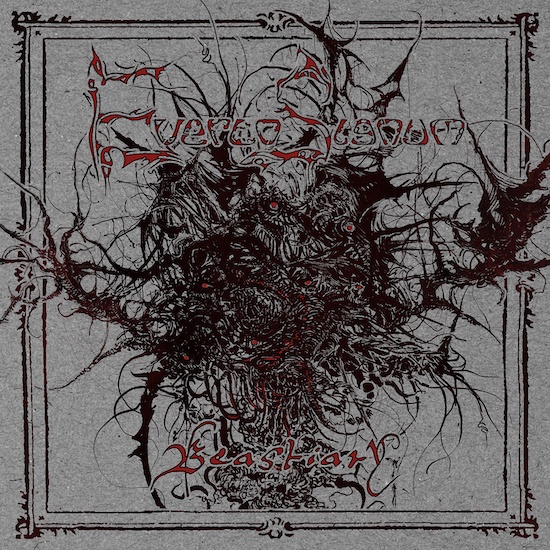
(written by Islander)
As we all know, lyrics are almost always secondary or tertiary attractions in extreme metal, even when they mean the world to the lyricist, in part because they’re usually indecipherable and in part because they’re often just not very compelling. And so when the lyrics are as fascinating and gripping as they are on Everto Signum‘s new album Beastiary, they warrant special attention — which we’re giving them even before we turn to the main focus of this article — a premiere stream of all the music packed into the album by this avant-garde black metal duo from Portugal.
Here is the album’s thematic concept, as described by the Monumental Rex label, which will release Beastiary tomorrow (November 1st):
“The band stays true to their elemental background by writing an immersive story that guides the listener through a chain reaction of natural disasters. These calamities are beastialized – manifested as wild uncontrollable beasts exhibiting intrinsic animalistic shapes, traits and behaviours.
“The plot is comprised of seven chapters, each consisting of a contextual introduction that describes the scenery and sets the mood for the destruction to come, and an interpretation of the actual cataclysm.
“Written in English, the expressively poetic lyrical narrative portrays a journey from an ice-covered mountain top through a valley, down to the depths of a meromictic lake and finally into a perennial forest to witness the dreadful wrath of ancient forces.”
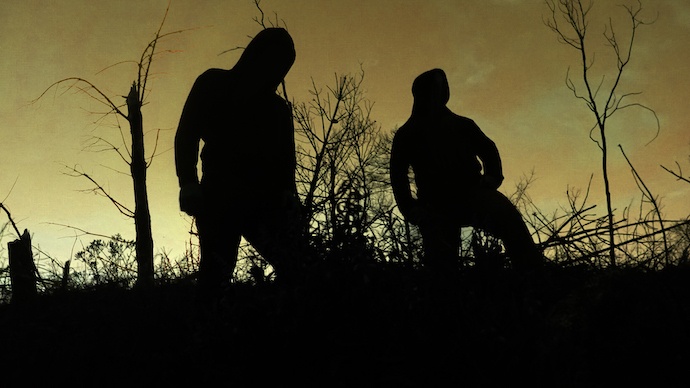
The words in these songs truly are poetic and gripping, and the textual introductions that accompany each song, which set the stage for the disasters to come but are not vocalized in the tracks, are equally eloquent.
As summarized in the quotations above, the album’s lyrical narrative describes a process of Death dealt by Nature, a process of deconstruction and purification that leads to transformation and new creations. The specific sequence of destruction portrayed across the album encompasses an earthquake that shakes a mountain into avalanche (“Colossus“), causes a river to storm through its impediments (“Ophidian“), and describes the gruesome impact of those catastrophes on both beautiful lowland meadows (“Wyvern“) and on a great lake, where the quake also triggers a sulphurous volcanic upheaval (“Dragon“).
From there, “Deinos” describes the rampaging waves of the lake-eruption assaulting an old forest fortress on its shores, and turning it to ruins, and “Weaver” captures the insidious invasion through the decimated forest of an “enormous nebula of poisonous gas” freed from the elements beneath the lake. That latter song’s final words, which end the album, are these:
In this cursed place, every living thing asphyxiates.
In this haunted land, every living thing has found its end.
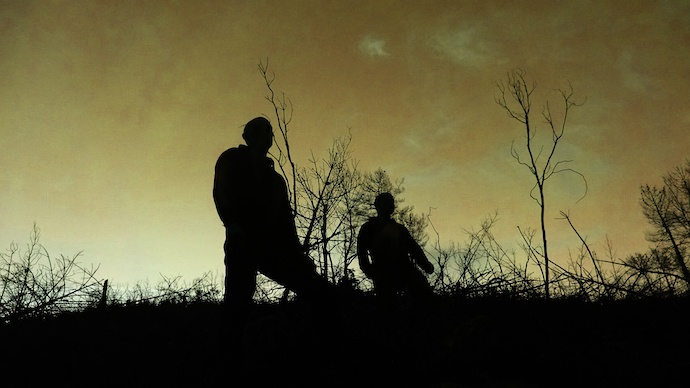
Well, we ought to get to the music, to discuss how this Portuguese band have imagined these events through sound.
The brief opening track “Genesis” sets the stage in raw and raucous (and even shocking) fashion, accompanied in the album’s booklet by an eloquent statement about Nature’s uses of death and destruction, “bringing forth the Genesis of tribulations,” to create anew. After that, it’s tempting for someone who’s read all the words to hold their breath, worried that this band (or any band) might fall short in musically matching such a powerful and devastating libretto.
Everto Signum don’t fall short. As I’ve already written about “Colossus“, it sounds like the violence of the earthquake is already in progress when we join the song, manifested by the heavy turbulence of the bass, the obliterating frenzy of the drums, and the slashing and smashing assault of the guitar. Gargantuan growls add to the devastating enormity of the event, and a searing lead guitar pierces through the tumult, adding to its terrors.
The song passes through other phases as well, slowing the music’s pace and intensity but also racing and hammering again, with unhinged screams and screaming guitars joining in. As if to capture the ruin left in the cataclysm’s wake, the melody also becomes dismal and stricken, and the lead-guitar wails in agony through the maelstroms.
Everto Signum also provide brutish chugging, giving listeners a chance to hammer their own heads, and they engage in head-spinning displays of rhythmic eccentricity and fretwork freakishness too.
Taking all of these changes together, the song makes clear that the band haven’t tightly lashed themselves to the mast of black metal but have freely brought in ingredients from death metal and even prog (you’ll discover even more far-reaching stylistic amalgamations in other songs on the album).
The songs that follow are also destructive and devastating in their manifestations of the beasts Nature has set loose, the catastrophes those beasts revel in creating, and the hysteria, fear, and hopelessness of the lives they are brutally snuffing out, but they also translate the haunting softness of death spread wide.
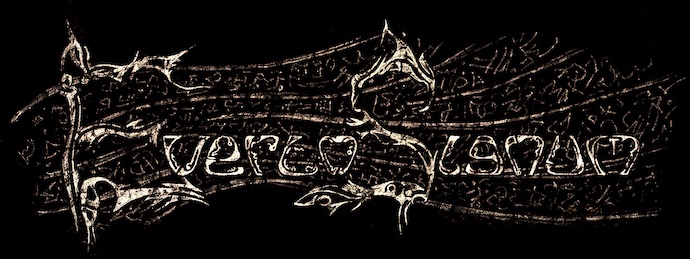
Those ensuing songs are also as dynamic and multi-faceted as “Colossus“, and even more so, fashioning all the terrible events and their aftermaths in a multitude of forms, from the weirdly warping and psychedelically hallucinatory phases and hallowed singing within “Ophidian” (which also includes sinister and seductive bass soloing) to the evil, bounding frolics, dervish-like spinning, and glittering keyboard and spiraling guitar glories of the genuine musical spectacle named “Wyvern“, and onward to the breathtaking tumult, incinerating terrors, and dismal descents of “Dragon” (which again includes soaring choral voices).
As the band proceed from one harrowing lyrical cataclysm to the next, they stretch their musical boundaries further and further away from “conventional” black metal, while always periodically returning to bursts of scathing, scorching, and blasting aggression. They thrash, they get very proggy and a bit jazzy, they trip out, they provide whirling folkish dances, they sound classically baroque, they become panoramic and mystical — and you never see the changes coming from minute to minute.
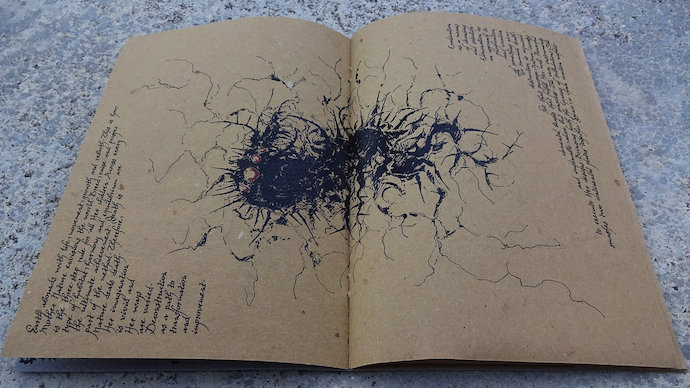
At more than 13 minutes, “Deinos” is the album’s longest song, and because of its duration it turns out to be the most multi-faceted and head-spinning of them all — which is definitely saying something in the context of this mind-boggling album — and while “Weaver” lyrically concerns the creeping invasion of a toxic miasma, it ends the album in wild and exhilarating fashion, while making room for yet another nimble and attention-grabbing bass performance and the sound of mournful horns.
And so, the music turns out to be every bit as fascinating as the words, displaying tremendous, free-wheeling inventiveness and stylistic variety, rich in its details and performed with eye-popping instrumental flair. In short, it’s hands-down, no-bullshit, one of the most remarkable albums I’ve heard all year. Here you go:
For those who may be unfamiliar with Everto Signum (after all, it has been a dozen years since the release of their first album and a decade since their intervening EP), it’s a duo consisting of Nekruss and Æminus, both of whom are also the participants in Carma (Nekruss is also the principal member of Lacrau). On Beastiary, they were joined by session drummer Diogo Mota (probably best known for his work as the drummer of Gaerea).
Beastiary was recorded, mixed, and mastered by Nekruss. The accompanying artwork was created by RF Torres Valente, who made graphite and ink illustrations. Infected Minds then embellished those with arcane calligraphy and arranged them into a grimoire-inspired layout. As Monumental Rex describes: “Printed on rough texturized paper, the magnificent A5-sized 20-page booklet seamlessly depicts surrealistic concepts envisioned by Everto Signum“.
The booklet accompanies a limited CD edition of the album, and the album is also available digitally. Check the links below for more info.
PRE-ORDER:
https://evertosignum.bandcamp.com/album/beastiary
EVERTO SIGNUM:
https://www.facebook.com/evertosignum
https://open.spotify.com/artist/6yaEiM36ZHGwE7bSOzuqcw
